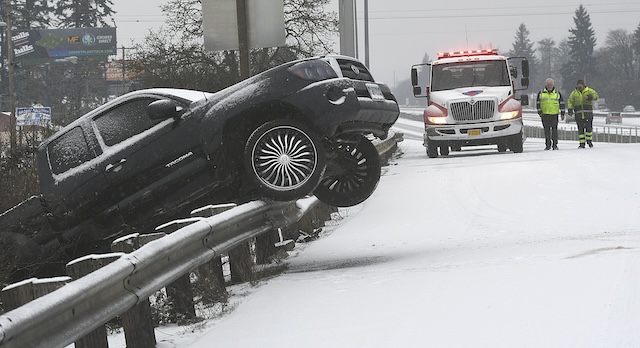NFL gives lower-body padding a tryout
Published 5:00 am Saturday, August 7, 2010
ALBANY — When Keyshawn Johnson played receiver in the NFL, he wore pads sporadically — paper thin and as few as possible on his hips, thighs and knees — less to ward off a blow than a fine from Bill Parcells.
“The guy in the poster in the locker room is No. 79, and he’s wearing every piece of equipment they’ve ever made,” Johnson, now an ESPN analyst, said in a telephone interview. “They say you’re supposed to look like this when you take the field? I didn’t like it. I wasn’t a No. 79. It was too much to be wearing.”
Perhaps, but this summer the NFL is determined to change players’ minds by orchestrating a locker room fashion revolution. During training camp and in preseason games, 12 teams, including the Giants and the Jets, are testing new girdles — the NFL’s word — that have built-in padding at the hip, thigh and tailbone.
The league wants feedback in hopes that the pads, which are essentially high-tech foam and rubber sewn into bicycle shorts, will be so light and easy to wear that players will slip them on without a thought.
In 2011, the NFL is likely to make lower-body pads a mandatory part of the uniform. For now, helmets and shoulder pads are the only protective equipment required. The NFL says only 50 percent of players wear lower-body pads, a dismal rate considering the agony a helmet-to-hipbone hit can cause.
Parcells considered not wearing full pads as conduct detrimental to the team because it created an unnecessary injury risk. But even one of the game’s most influential coaches lost out to a more ingrained part of the NFL culture: speed kills.
With players and collisions bigger and more devastating than ever, it may seem counterintuitive to eschew anything that offers protection. But professional football players — mainly receivers and defensive backs who rely on quickness, but some linemen, too — have a finely tuned sense of their bodies and are convinced that even plastic shells less than a quarter-inch thick and a few inches wide encumber them.
The days of fully armored players — with bulky thigh and hip pads rippling from beneath uniforms — are long gone, especially at the skill positions. Many leave everything except shoulder pads in the locker room, preferring the risk of injury — and in the case of Johnson, who played for Parcells with the Jets and the Cowboys, multiple team fines — over allowing an opponent to have an edge.
“You’ve got guys who wear absolutely nothing,” Joe Skiba, the Giants’ equipment director, said. “They’re nuts.”
The NFL has no statistics indicating that wearing lower-body padding prevents injuries. But Ray Anderson, the NFL’s executive vice president for football operations, said data showed that bruises to the hip, thigh and knee cost players workdays — vital practice time, if not games. There is urgency to limiting lost time: With an 18-game regular season almost certain to be a part of a new collective bargaining agreement, the NFL is exploring things like equipment and expanded rosters to insulate players from bruises and broken bones.
“You mitigate any excuses,” Anderson said in a telephone interview. “They think it makes them lighter and they feel faster and therefore they don’t want to wear them. Then players say, ‘I would wear them but I look across the field and I think they have a speed advantage.’”
Giants coach Tom Coughlin requires players to wear thigh pads, although they offer much less protection now than they used to. Traditional thigh pads were half-inch foam, but at the behest of players they have been winnowed to a piece of inflexible plastic barely the width of a bicep. They crack often; Skiba said the Giants go through at least 100 of them each season. Players dislike them so much that they leave them in their lockers.
“So how much protection is it?” Skiba said.
The good news: The padding is so light and flexible on some of the designs being tested that players who are used to wearing compression tights under their uniforms are unlikely to feel weighed down. The bad news: The padding is so light that it is unlikely to prevent a serious injury caused by a direct blow from a helmet. But for skill position players who receive mostly glancing blows, the new shorts may alleviate some of the lacerations and contusions they get when wearing no pads.
Still, convincing players to try the shorts is a sales job borne by equipment managers like Skiba, who has begun pulling players aside and leaving the test shorts in their lockers. He hopes that the culture change will bubble up from high schools, where the padded girdles are such a craze that professional teams have been asked to donate them.
“We need to lead the witness on players,” Skiba said. “We have to get guys in it. This is for guys who wear absolutely nothing. All you need is one guy and one big guy and everyone will follow.”








